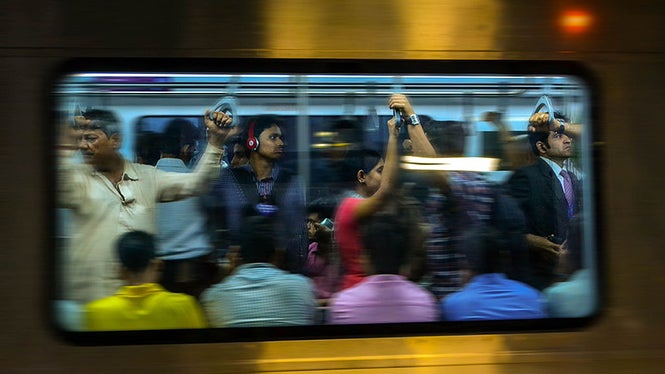
Today, 54% of people live in cities and towns. Cities can be magnets for population growth and offer opportunities for jobs and social empowerment; but they can also be a source of congestion, exclusion and impoverishment. Which path of urban growth will prevail depends, in large part, on the quality and availability of mobility solutions. Transport is a structuring element of cities.
The reality of mobility in today’s cities is alarming— especially when measured against the four criteria that define sustainable mobility:
- Universality of access to economic and social opportunities: cities with effective mobility systems can help people get access to jobs, education, and health services . In Buenos Aires, for example, a resident can access approximately 34% of the jobs in the metropolitan area in 60 minutes; but, in Cairo, only 15%. Lack of mobility “holds” people in place, giving isolated communities few options and paths out of poverty . In Bogota, for example, the high concentration of jobs in specific parts of the city has caused major problems of unequal transit employment access that affects primarily the low-income population.
- Efficiency: transport systems that are well integrated across modes can curb sprawl, create compact, walkable neighborhoods , and reduce the number of kilometers traveled. In most cities, though, transport systems are dominated by personal motorized modes: less than 40% of all personal trips to work are made by public transport, walking, or cycling .
- Safety and security: nearly half of the world’s traffic fatalities already occur in cities. Less than 1/3 of countries have comprehensive road safety laws, representing just 7% of the world’s population . Personal security on public transport systems is also a growing concern, particularly for women and girls.
- Environmental and health impacts: cities are a major contributor to pollution, carbon emissions, and energy demand. With one billion cars already on the road, road transport accounts for about 2/3 of total transport emissions . Fuel economy and other technological advances have improved over time, but there are significant differences between countries and regions dependent on the average size of engine displacements, their technology, and the mix of gasoline and diesel fuels used. Likewise, air pollution is primarily an urban issue. Urban air pollution is estimated to cause about 9% of lung cancer deaths, 5% of cardiopulmonary deaths, and about 1% of respiratory infection deaths.
To turn this vision into reality, actions to promote sustainable mobility for all will be paramount—starting with the several initiatives currently underway to elaborate a global program of actions and transform the world’s mobility . One such effort is the UN Secretary General’s High-Level Advisory Group on Sustainable Transport, which will issue its recommendations shortly. Habitat III offers other opportunities—such as supporting public transport, non-motorized options and transit-oriented development, integrating land-use and transport planning, seeking innovative financing, and using big data to help countries leapfrog to more sustainable modes.
But who will drive the agenda? Several proposals that outline a new global governance structure are on the table. For example, strengthened UN system-wide coordination, and a new Multi-stakeholder Panel on Sustainable Urbanization.
The New Urban Agenda adds another important element to the global map on sustainable development. But as global commitments continue to grow, with direct implications for transport—the post 2030 Agenda, Paris Climate Agreement, UN Decade of Action, and now Habitat III— it is becoming more urgent than ever to reach a consensus on a common vision on mobility and develop a solid global tracking framework. It is a matter of accountability and credibility.


Join the Conversation